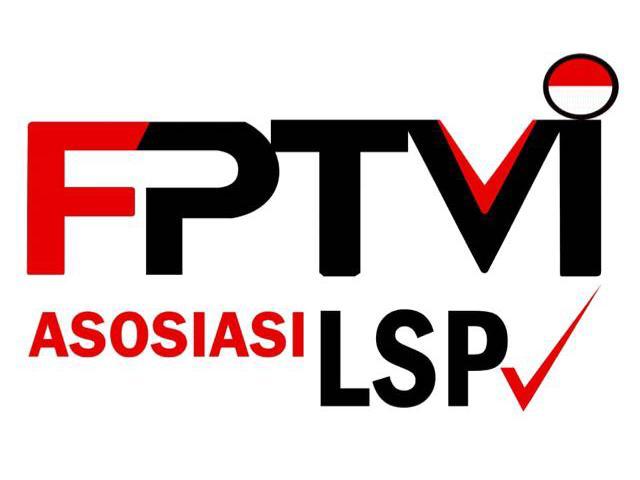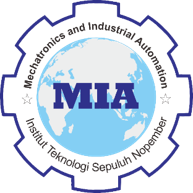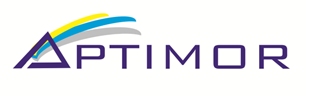Implementation Of Fuzzy Logic in The Dissolved Oxygen and pH Control System to Reduce the Risk of Death of Cyprinus Carpio Fish
Abstract
Cultivation of Cyprinus carpio, commonly known as the goldfish, in aquariums requires strict monitoring of water quality to maintain the fish's health and ensure its survival. Key parameters such as dissolved oxygen and pH greatly affect the aquatic environment, where imbalances can lead to stress or death. This study aims to design and implement a dissolved oxygen and pH control system using fuzzy logic as an alternative to traditional PID-based or rule-based systems commonly used in aquaculture. The proposed system automatically detects water conditions (LOW, NORMAL, HIGH) and activates appropriate control responses. It integrates an SEN0237 dissolved oxygen sensor, an E-201C pH sensor, aerators, dosing pumps, and an Arduino-based microcontroller. Sensor data is processed via fuzzy inference to operate actuators—either to increase oxygen levels or inject buffer solutions for pH normalization. Unlike previous studies that focus on single-parameter control or fixed-response systems, this system offers a dual-parameter adaptive control approach. Experimental validation shows that the system maintains pH at 6–7 and DO at 3–4 mg/L, with sensor accuracy exceeding 95%. Over 10 days, fish survival improved in the controlled aquarium (7/10) compared to the uncontrolled aquarium (5/10). The system demonstrates potential to reduce water quality fluctuations, offering hope for a more stable aquaculture environment. This work contributes to the application of fuzzy logic in small-scale innovative aquaculture systems, highlighting its potential advantages over conventional methods.
Keywords
Full Text:
PDFReferences
X. Huang et al., “cMOS enhanced the mucosal immune function of skin and gill of goldfish (Carassius auratus Linnaeus) to improve the resistance to Ichthyophthirius multifiliis infection,” Fish Shellfish Immunol., vol. 126, pp. 1–11, Juli. 2022.
S. M. Noureldin, A. M. Diab, A. S. Salah, and R. A. Mohamed, “Effect of different monochromatic LED light colors on growth performance, behavior, immune-physiological responses of gold fish, Carassius auratus,” Aquaculture, vol. 538, no. 2, art. no. 736532, 2021.
M. N. A. M. Roslan, A. Estim, B. A. V. Maran, and S. Mustafa, “Effects of aquatic plants on nutrient concentration in water and growth performance of fantail goldfish in an aquaculture system,” Sustainability (Switzerland), vol. 13, no. 20, 2021.
N. Akhtar, M. I. Syakir Ishak, S. A. Bhawani, and K. Umar, “Various natural and anthropogenic factors responsible for water quality degradation: A review,” Water (Switzerland), vol. 13, no. 19, 2021.
J. P. S. Pinheiro, F. M. Windsor, R. W. Wilson, and C. R. Tyler, “Global variation in freshwater physico-chemistry and its influence on chemical toxicity in aquatic wildlife,” Biological Reviews, vol. 96, no. 4, pp. 1528–1546, 2021.
R. M. Reda, A. El-Murr, N. A. Abdel-Basset, M. M. M. Metwally, and R. E. Ibrahim, “Implications of ammonia stress for the pathogenicity of Shewanella spp. in Oreochromis niloticus: effects on hematological, biochemical, immunological, and histopathological parameters,” BMC Vet Res, vol. 20, no. 1, pp. 1–18, 2024.
T. I. Zuffo et al., “Lethal temperature and toxicity of ammonia in juveniles of Curimbatá (Prochilodus lineatus),” Aquaculture, vol. 545, pp. 1–7, Jun. 2021.
Y. Wu, X. Wang, L. Wang, X. Zhang, Y. Shi, and Y. Jiang, “Dynamic and explainable fish mortality prediction under low-concentration ammonia nitrogen stress,” Biosyst Eng, vol. 228, pp. 178–192, 2023,
J. Motamedi-Tehrani, R. Peyghan, A. Shahriari, M. Razijalali, and E. Ebrahimi, “Correction to: The influence of ammonia-N and salinity levels on oxidative stress markers, hepatic enzymes, and acid phosphatase activity in Nile tilapia (Oreochromis niloticus),” Sci. Rep., vol. 15, no. 1, pp. 1–18, 2025.
Z. Xu, J. Cao, X. Qin, W. Qiu, J. Mei, and J. Xie, “Oxidative stress, immune responses and tissue structure in fish exposed to ammonia nitrogen: A review,” Animals, vol. 11, pp. 1–19, 2021.
M. Verdegem, A. H. Buschmann, U. W. Latt, A. J. T. Dalsgaard, and A. Lovatelli, “The contribution of aquaculture systems to global aquaculture production,” J. World Aquac. Soc., vol. 54, no. 2, pp. 206–250, 2023.
F. Aljehani, I. N’Doye, and T. M. Laleg-Kirati, “Model-based versus model-free feeding control and water-quality monitoring for fish-growth tracking in aquaculture systems,” IFAC J. Syst. Control, vol. 26, p. 100226, 2023.
I. Y. Gudbrandsdottir, G. V. Oddsson, H. Stefansson, G. Olafsdottir, and S. G. Bogason, “Towards a systems perspective in policy design: An analysis of how the endogenous feedback structure of the Norwegian salmon aquaculture industry impacts policy outcomes,” Aquaculture, vol. 598, p. 742045, 2025.
H. Li, Z. Cui, H. Cui, Y. Bai, Z. Yin, and K. Qu, “A review of influencing factors on a recirculating aquaculture system: Environmental conditions, feeding strategies, and disinfection methods,” J. World Aquac. Soc., vol. 54, no. 3, pp. 566–602, 2023.
A. Valle González, C. Robles-Algarín, and A. Rodríguez Forero, “Intelligent control system for multivariable regulation in aquaculture: Application to Mugil incilis,” Technologies, vol. 13, no. 7, 2025.
X. Zhou, J. Wang, L. Huang, D. Li, and Q. Duan, “Modelling and controlling dissolved oxygen in recirculating aquaculture systems based on mechanism analysis and an adaptive PID controller,” Comput. Electron. Agric., vol. 192, p. 106583, 2022.
W. M. Elmessery et al., “A deep deterministic policy gradient approach for optimizing feeding rates and water quality management in recirculating aquaculture systems,” Neural Comput. Appl., vol. 33, no. 4, 2025.
M. Alateeq and W. Pedrycz, “Logic-oriented fuzzy neural networks: A survey,” Expert Syst. Appl., vol. 257, p. 125120, 2024.
A. Peralta, J. A. Olivas, and P. Navarro-Illana, “A fuzzy logic framework for text-based incident prioritization: Mathematical modeling and case study evaluation,” Mathematics, vol. 13, no. 12, p. 2014, 2025.
A. Bressane, A. J. da S. Garcia, M. V. de Castro, S. D. Xerfan, G. Ruas, and R. G. Negri, “Fuzzy machine learning applications in environmental engineering: Does the ability to deal with uncertainty really matter?,” Sustainability, vol. 16, no. 11, art. no. 4525, May 2024.
DOI: http://dx.doi.org/10.12962%2Fj23378557.v11i2.a22996
Refbacks
- There are currently no refbacks.
This work is licensed under a Creative Commons Attribution 4.0 International License. IPTEK The Journal of Engineering published by Pusat Publikasi Ilmiah, Institut Teknologi Sepuluh Nopember.
Please contact us for order or further information at: email: iptek.joe[at]gmail.com Fax/Telp: 031 5992945. Editorial Office Address: Pusat Riset Building 6th floor, ITS Campus, Sukolilo, Surabaya 60111, Indonesia.








